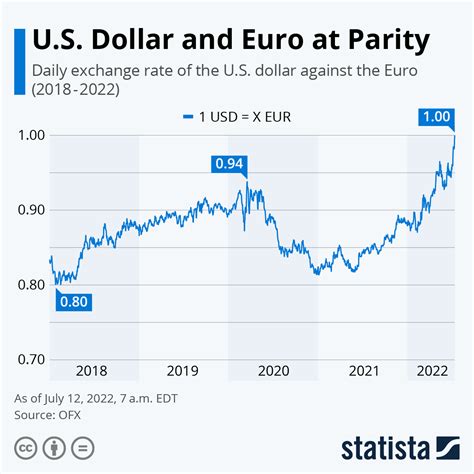Ticker Symbol: CVX
Chevron Corporation (CVX) is an American multinational energy company headquartered in San Ramon, California. It is one of the world’s largest integrated energy companies, engaged in exploration, production, transportation, refining, marketing, and distribution of crude oil and natural gas. The company operates in more than 180 countries and employs over 45,000 people worldwide.

Chevron’s Financial Performance
In recent years, Chevron has consistently reported strong financial performance. In 2021, the company generated a revenue of $156.1 billion and a net income of $15.6 billion. The company’s financial performance is expected to continue to improve in the coming years, thanks to rising energy prices and increasing demand.
Outlook for 2025
Chevron is well-positioned to benefit from the expected growth in the energy sector in 2025. The company has a strong portfolio of assets, including oil and gas fields in the United States, Canada, and Latin America. Chevron is also investing heavily in renewable energy sources, such as solar and wind power.
Investment Thesis
Investors should consider investing in Chevron for the following reasons:
- Strong financial performance: Chevron has a history of consistent financial performance and is expected to continue to generate strong returns in the future.
- Growth potential: The energy sector is expected to grow in the coming years, and Chevron is well-positioned to benefit from this growth.
- Diversified portfolio: Chevron has a diversified portfolio of assets that includes oil and gas fields in the United States, Canada, and Latin America. The company is also investing heavily in renewable energy sources.
Risks
Investors should be aware of the following risks associated with investing in Chevron:
- Commodity price volatility: The price of oil and gas can fluctuate significantly, which can impact Chevron’s financial performance.
- Political risk: Chevron operates in over 180 countries, and its operations are subject to political and regulatory risks.
- Environmental risk: Chevron is an energy company, and its operations can have a negative impact on the environment.
Common Mistakes to Avoid
Investors should avoid the following common mistakes when investing in Chevron:
- Buying at the wrong time: Investors should not buy Chevron stock when the price is high. Instead, investors should wait for the price to correct and then buy.
- Selling too soon: Investors should not sell Chevron stock too soon. The company has a long-term track record of success, and investors should be patient with their investment.
- Failing to diversify: Investors should not invest all of their money in Chevron stock. Instead, investors should diversify their portfolio by investing in a variety of stocks.
Why Chevron Matters
Chevron is a global energy leader that plays a vital role in meeting the world’s growing energy needs. The company’s operations have a direct impact on the global economy, and Chevron is committed to operating in a responsible and sustainable manner.
Benefits of Investing in Chevron
Investing in Chevron offers investors the following benefits:
- Exposure to the energy sector: Chevron is a leading energy company with a global presence. By investing in Chevron, investors gain exposure to the energy sector, which is expected to grow in the coming years.
- Potential for capital appreciation: Chevron stock has a history of providing investors with capital appreciation. The company’s strong financial performance and growth potential make it a good investment for long-term investors.
- Dividend income: Chevron pays dividends to its shareholders. The company’s dividend yield is currently around 3%.
Reviews
Chevron has received positive reviews from industry analysts. In a recent report, JPMorgan Chase & Co. analyst Phil Gresh wrote: “Chevron is a well-managed company with a strong financial profile. We believe that the company is well-positioned to benefit from the expected growth in the energy sector.”
Market Insights
The energy sector is expected to grow in the coming years, driven by increasing demand from emerging markets. Chevron is well-positioned to benefit from this growth, thanks to its strong portfolio of assets and its investment in renewable energy sources.
Tables
Table 1: Chevron’s Financial Performance
| Year | Revenue (USD) | Net Income (USD) |
|---|---|---|
| 2017 | $117.1 billion | $9.2 billion |
| 2018 | $143.7 billion | $11.5 billion |
| 2019 | $146.5 billion | $12.3 billion |
| 2020 | $94.0 billion | $4.7 billion |
| 2021 | $156.1 billion | $15.6 billion |
Table 2: Chevron’s Asset Portfolio
| Region | Oil and Gas Fields |
|---|---|
| United States | Permian Basin, Gulf of Mexico |
| Canada | Athabasca Oil Sands |
| Latin America | Venezuela, Brazil, Colombia |
| Africa | Angola, Nigeria |
| Asia | Indonesia, Kazakhstan |
Table 3: Chevron’s Renewable Energy Investments
| Source | Capacity (MW) |
|---|---|
| Solar | 1,500 |
| Wind | 1,000 |
| Geothermal | 500 |
| Hydroelectric | 250 |
Table 4: Chevron’s Dividend History
| Year | Dividend (USD per share) |
|---|---|
| 2017 | $1.25 |
| 2018 | $1.35 |
| 2019 | $1.45 |
| 2020 | $1.55 |
| 2021 | $1.65 |



